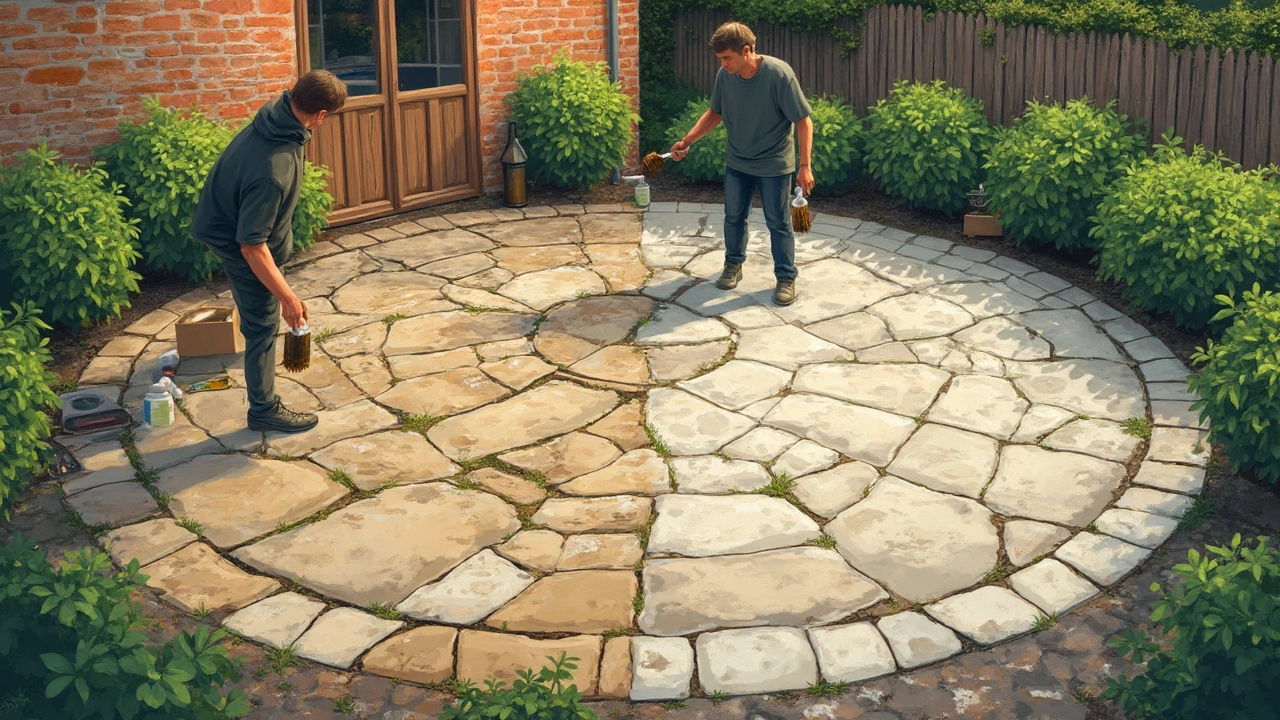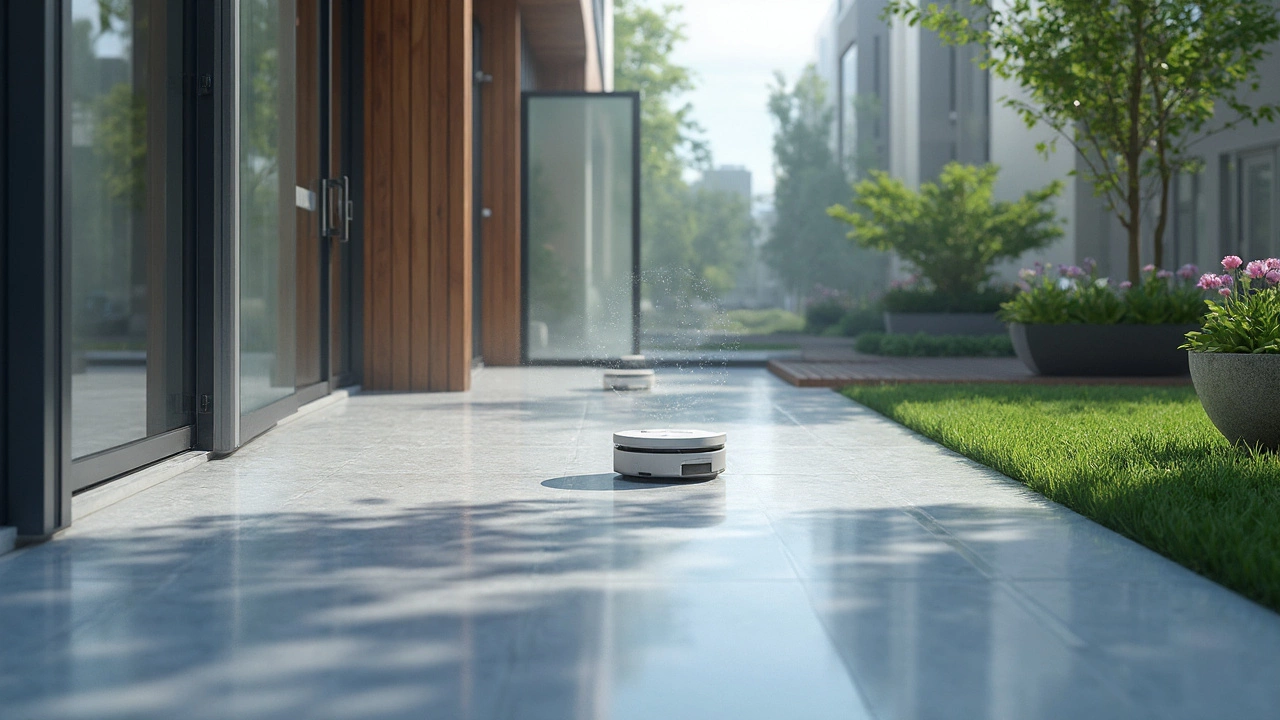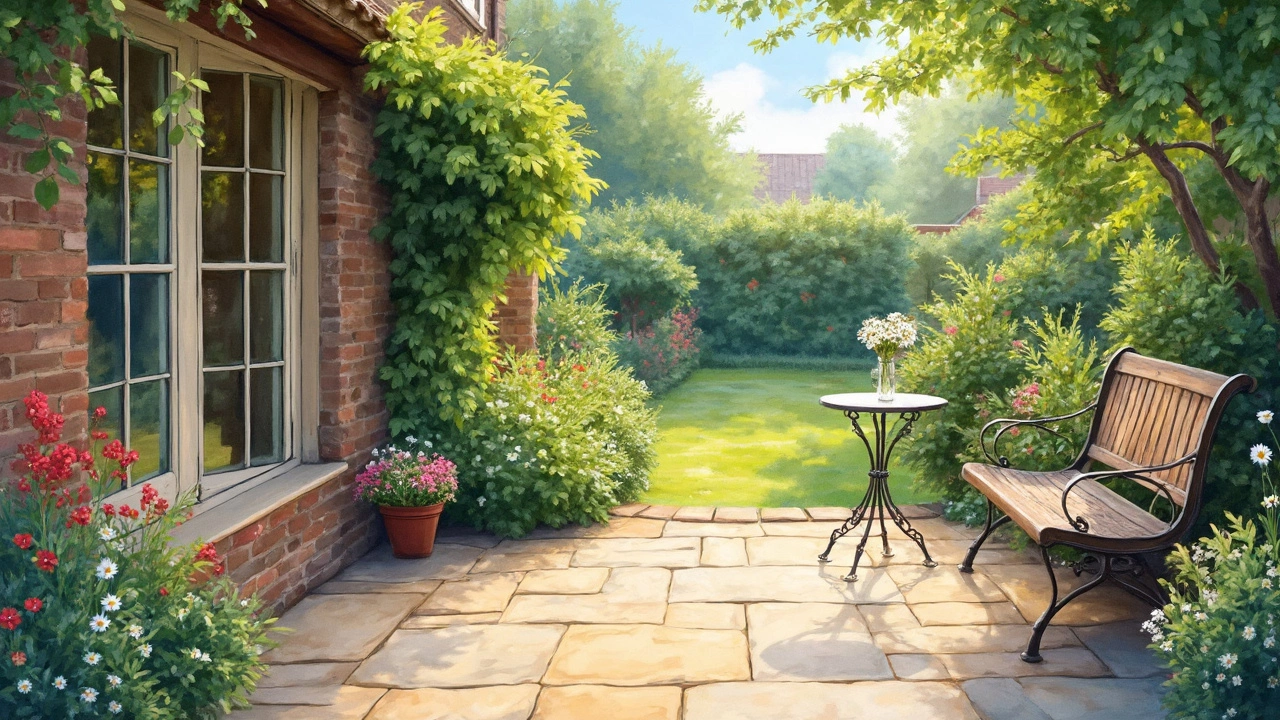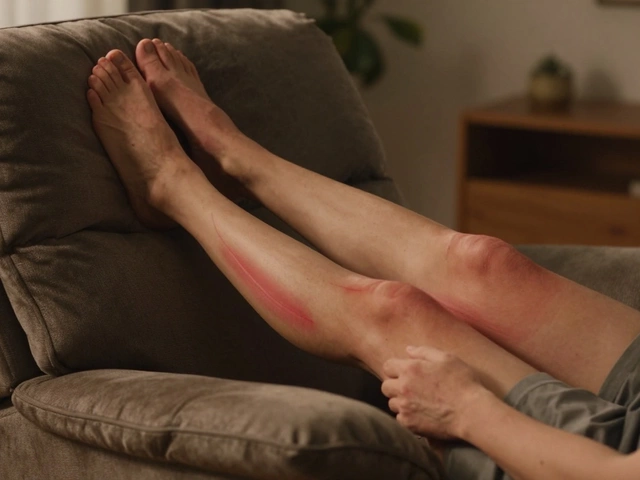Oh, that pesky mold on your patio! It's like an uninvited guest at a garden party—nobody wants it there. But mold isn't just unattractive; it can be a health hazard and even cause structural damage if ignored. So what can you do about it?
First things first, let's dig into why this happens. Mold thrives in damp, humid environments, so if your patio doesn’t get much sunlight or dries slowly after rain, you’ve got a perfect breeding ground. Identifying the cause is crucial to not just getting rid of it but stopping it in its tracks.
Now, you might be wondering, "Can I really tackle this without calling in the experts?" Absolutely! There are simple, effective methods you can use right away. Whether you prefer natural solutions like vinegar and baking soda or want to try those commercial products, there's something for every kind of DIY enthusiast. Stick around, and I’ll walk you through how to tackle that mold effectively and keep it at bay.
- Understanding Patio Mold: What Causes It?
- Top Natural Solutions for Mold Removal
- Commercial Cleaners: When and How to Use Them
- DIY Mold Prevention Tips
- Maintaining a Mold-Free Patio Year-Round
Understanding Patio Mold: What Causes It?
Mold on patios is like having unwelcome guests who just won’t leave. But before you get to eviction mode, it's smart to understand why it's crashing your pad in the first place. Mold loves moist, damp, and warm environments. If your patio is on the shady side or doesn't get enough airflow, it's prime real estate for mold.
Different materials play a big role in mold growth too. Porous surfaces like wood and some stones are more likely to develop mold than non-porous materials such as metal or sealed concrete. These porous materials can trap moisture, making it harder for them to dry out after rainfall or cleaning.
That shady portion of your patio where sunlight rarely reaches? It holds onto moisture longer, giving mold the cue to set up shop. And don't forget about humidity. High humidity levels provide that constant moisture mold needs to thrive. Mold removal efforts will be in vain if these factors aren’t addressed.
Algae and mildew can pair up with mold to wreak even more havoc. They might not be the same, but they hang out together because they like the same conditions. It's all a bit like a troublesome trio setting up camp in your outdoor space.
Check out this lightning-bolt stat: Homes in areas with over 65% relative humidity see mold return twice as fast on unprotected surfaces compared to areas under 55% humidity. If that sounds like your area, then keeping things dry is even more crucial.
So, the golden question is: how do you prevent this from happening? First, look at improving sunlight exposure or air circulation on your patio. Missing some light? Trim back those garden hedges a bit or think about adding some outdoor fans. Every bit helps!
Top Natural Solutions for Mold Removal
When it comes to dealing with that stubborn mold on your patio, you might be surprised to learn that you probably have all you need right in your kitchen. Forget about harsh chemicals; there are plenty of eco-friendly, natural remedies that can do the trick just fine.
First on the list is the tried-and-true vinegar. White vinegar, to be precise. It’s an acid, which means it’s pretty good at killing off mold. Just pour some undiluted white vinegar into a spray bottle and spritz it over the affected areas. Let it sit for about an hour, then scrub the area with a brush and rinse it off with water. It’s easy, effective, and doesn’t leave any harmful residues. Plus, it keeps that garden furniture safe from damage.
Baking soda is another household hero. Not only does it remove mold, but it also deodorizes, making your patio smell fresh. Simply mix one tablespoon of baking soda with water and shake it in a spray bottle. Spray the solution onto the moldy spots, scrub gently, and rinse. If needed, you can repeat the process until your patio looks as good as new.
For tougher jobs, tea tree oil can be a game-changer. While it's a bit pricier, a little goes a long way. Mix one teaspoon of tea tree oil in a cup of water, pour it into a spray bottle, and give it a good shake. Spray it directly onto the mold and leave it. There's no need to rinse, and the oil helps prevent the mold from returning. Just make sure to store it properly, as tea tree oil is one potent solution.
These solutions are not just effective but also incredibly gentle on your surfaces compared to some commercial products. Plus, by choosing natural solutions, you're making a positive impact on both your outdoor space and the environment. So, before you reach for that chemical cleaner, give these natural remedies a go!

Commercial Cleaners: When and How to Use Them
Thinking about grabbing a bottle of commercial cleaner for your moldy patio? They can be a handy option when natural methods aren't cutting it. Commercial cleaners are specifically designed to tackle stubborn mold and mildew, making quick work of what might otherwise be a messy job.
But when should you use them? If your mold problem is extensive, or if natural remedies haven't budged the mold, it might be time to bring out the big guns. Products like Mold Armor or RMR-86 Instant Mold Stain Remover are popular choices that many people swear by.
Using commercial cleaners is generally straightforward, but it's important to follow the instructions on the label. Here's a basic rundown on how to apply them effectively:
- Preparation: Wear gloves and a mask for protection. Ensure your patio is clear of furniture and other items. Sweep the area to remove loose dirt or debris.
- Application: Apply the cleaner directly onto the affected areas. Spray or pour according to the bottle's instructions.
- Waiting Time: Let it sit for the recommended amount of time. This allows the chemicals to penetrate deeply and kill the mold at its roots.
- Scrubbing: Use a stiff brush to scrub the moldy spots gently. This helps dislodge the mold and ensures the cleaner gets into all nooks and crannies.
- Rinsing: Use a hose to rinse off the cleaner thoroughly. Make sure no cleaner residue is left behind, as it can degrade your patio surface over time.
One thing to keep in mind is that some harsh chemicals can be powerful but might not be environmentally friendly. If you are sensitive to chemicals or concerned about pets and plants nearby, choose a biodegradable option or one labeled as environmentally safe.
Commercial cleaners are efficient, but not always necessary for small or new mold issues. Knowing when to break out the commercial products versus trying another method can save time, money, and headache in the long run. So, consider the extent of your mold problem and what you’re comfortable using before making the call.
DIY Mold Prevention Tips
Alright, so you've scrubbed your patio clean of that unwanted mold. But how do you keep it from creeping back? Prevention is your best friend here, and the good news is that it doesn't require a complete lifestyle change. Just a few simple practices can keep your outdoor area looking great.
First, think about airflow and sunlight. Mold hates sunlight, so let the sunshine in! If you've got tall plants or outdoor furniture blocking the sun from reaching every corner of the patio, consider rearranging them. This small tweak can make a big difference in keeping those surfaces dry and mold-free.
Keep things clean and dry. Make it a habit to sweep leaves and debris regularly as they hold moisture and encourage mold growth. After a rainy day, try to remove any standing water that may have collected. This small act can be a game-changer in reducing moisture levels.
Another practical move is applying a mold-resistant sealant. These are available at most hardware stores and can add an extra layer of protection to your patio surfaces. If you're into eco-friendly options, natural oils like linseed can also work to seal surfaces and reduce moisture absorption.
- Keep your patio clean by sweeping and washing it regularly.
- Allow abundant sunlight to reach your patio by trimming back trees or repositioning furniture when needed.
- After rain, eliminate any standing water to reduce excess moisture.
- Consider using mold-resistant sealants or natural oils to protect surfaces.
If you want to track your success, consider noting the times you're most successful at keeping mold away and replicate those efforts. It could be as easy as timing clean-ups right after storms before the mold gets a chance to settle. Stay consistent, and you'll enjoy a mold-free patio all year round.

Maintaining a Mold-Free Patio Year-Round
Keeping your patio sparkling and free from mold doesn't have to be a constant struggle. With a few smart habits, you'll maintain that outdoor space as fresh as a daisy. Let’s break down the steps to ensure your patio stays mold-free no matter the season.
First, focus on regular cleaning. A simple routine like sweeping debris and leaves can make a big difference. Why? Because mold just loves organic matter to hang on to. If you make it a habit to sweep your patio once a week, you're already ahead of the game.
Next up, consider applying a mold-resistant sealant. These products are designed to create a barrier on surfaces like stone and wood and can significantly reduce the potential for mold growth. Do this once or twice a year, and you’ve got some serious mold-fighting mojo working for you.
- Ensure your patio has adequate drainage. Pooling water is mold's best friend, so make sure there are no spots where water is collected after rain or watering your plants.
- Trim nearby plants and trees. Allowing more sunlight to hit the patio keeps it drier—remember, mold hates dry places.
- Consider using outdoor furniture made from mold-resistant materials. Nowadays, some furniture is specifically designed to withstand the elements and reduce the chance of mold.
Oh, and keep an eye on the weather! If you've had a particularly wet week, a quick dry-down with a towel or a fan can do wonders. Mold can start growing within 24-48 hours in moist conditions, so a little prevention can save you a lot of trouble.
Check out the comparative effectiveness of mold prevention products in this handy table we've included for those who love a little data:
| Product | Efficiency Rate | Cost (USD) |
|---|---|---|
| Mold-Resistant Sealant | 85% | 20 |
| Mold Prevention Spray | 70% | 15 |
| Mold-Resistant Outdoor Paint | 90% | 30 |
There you have it! With these straightforward strategies, you’re well-prepared to keep your patio resilient and inviting throughout the year. Remember, the goal is to stay one step ahead of mold before it gets a chance to settle in and ruin your outdoor vibe.







